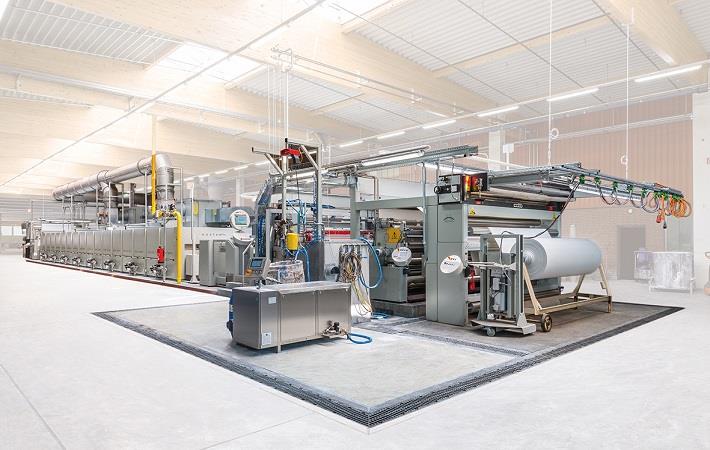
With this option, it is possible to carry out applications such as full PVC coatings, pigment dyeing or minimal application surface and low penetration treatments. Typical products this technology is eminently suited to range from tents and awnings, black-out roller blinds and sail cloth to automotive interior fabrics and medical disposables.
“Magnetic roller coating allows a wide range of coatings and finishes to be carried out, while being easy to handle for operators and much easier to clean at the end of the process. As important as anything, however, is the coating uniformity it guarantees, with no difference in tension across the entire width of the fabric – which is particularly important when companies are operating at wide widths,” Jürgen Hanel, Monforts head of technical textiles said.
“With traditional dip coating systems, as well as with many standard knife coating technologies, there is always a difference in the tension – and hence the amount of pressure with which the coating is applied – between the centre and the edges of the wide width fabrics being treated. With the use of a magnetic roller, there is no difference in the pressure being applied anywhere on the fabric. Our magnetic roller technology provides textile finishers with an expanded range of options due to the fully-adjustable positioning of the magnet within the roller. With four different magnet positions possible, the roller can be set to operate both as a direct coating system and as an indirect coater. We recommend the use of this technology for companies working with fabrics of over 2.4 metres,” Hanel added.
Adjusting the roller surface, rather than changing the finishing formulation, to match the required add-on and viscosity for each coating effect required, leads to much higher output from the line. Furthermore, adjustments can now be made simply and easily with the new hand-held remote controller which has recently been introduced for the MontexCoat unit.
“This is a really big help because making adjustments manually was previously quite time consuming and operators had to move between the fixed control panel and the position of the adjustment constantly. It also allows an operator to check that the knife is precisely positioned by simply holding the device in the position where he or she can see and measure the gap. With the device the motors can be controlled and the necessary adjustments carried out,” Hanel said.
ALCHEMPro News Desk (GK)
Receive daily prices and market insights straight to your inbox. Subscribe to AlchemPro Weekly!